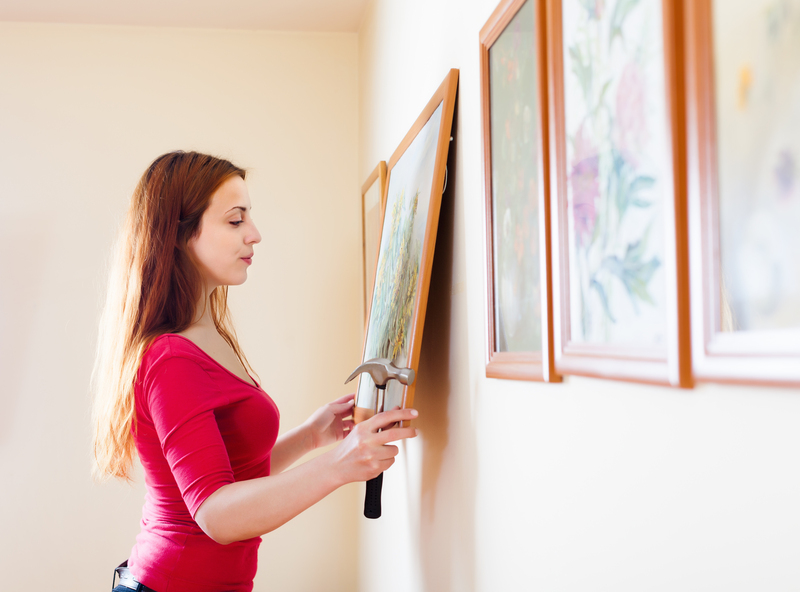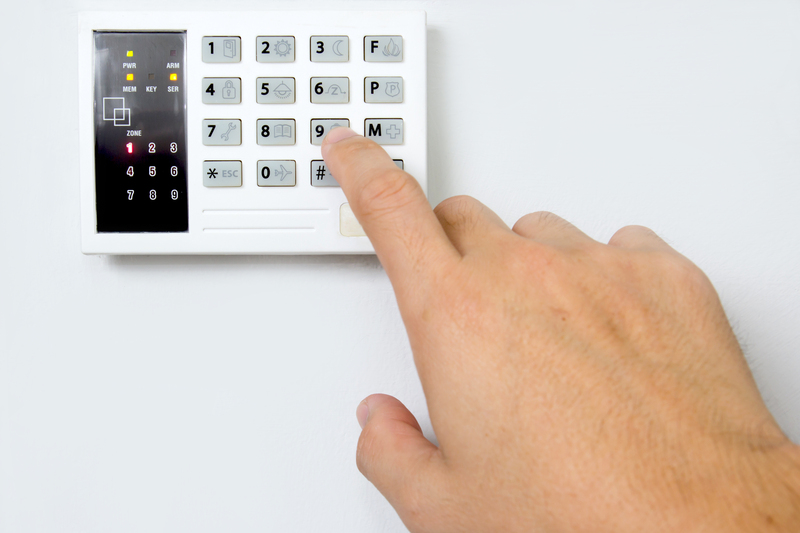How to Protect Fragile Items When Packing Up Your Home
Moving to a new home can be both exciting and stressful, but it's the safety of your prized, fragile belongings that often causes the most concern. Whether you're relocating across town, moving to a new state, or just rearranging rooms, protecting delicate items is key to making sure valuables arrive safe and sound. In this guide, you'll discover practical tips and proven packing techniques for how to protect fragile items when packing up your home. These strategies ensure your possessions withstand the rigors of moving and emerge from the journey unscathed.
Why Fragile Items Require Special Attention When Packing
Glassware, ceramics, antiques, electronics, and artwork are more than just possessions -- they may hold sentimental value or represent significant investments. Fragile items are especially vulnerable to vibrations, impacts, and pressure during a move. Without proper packing, a careless jolt or an unexpected bump could result in irreparable damage. Understanding the unique challenges these items present is the first step toward ensuring their safety.
Common Risks During a Move
- Dropping or Jostling -- Transport and handling can easily jar fragile items.
- Vibration In Trucks -- Long rides cause continuous vibrations that can weaken fragile goods.
- Stacking Pressure -- Heavy boxes atop delicate goods increase chances of breakage.
- Temperature & Humidity -- Some items may be sensitive to heat or moisture.

Essential Packing Supplies for Fragile Items
The right materials can make all the difference in protecting breakable items during a move. Here's a list of essentials you'll need:
- Strong, Double-Walled Boxes
- Bubble Wrap
- Packing Peanuts
- Packing Paper (Unprinted Newsprint)
- Foam Sheets or Rolls
- Stretch Plastic Wrap
- Cardboard Dividers (especially for glassware and dishes)
- Packing Tape (heavy-duty, wide tape preferred)
- Markers and Label Stickers
- Blankets or Towels for extra cushioning
Tip: Avoid using printed newspaper for wrapping, as the ink can transfer and stain your valuables.
Step-By-Step: How to Pack Fragile Items for Moving
1. Sort and Prepare Your Fragile Goods
Begin by separating all delicate items from other belongings. This makes it easier to plan how to wrap, pad, and box them properly. Take a few moments to photograph valuables for inventory and insurance purposes. If you're packing especially precious or antique pieces, consider having them professionally appraised before moving.
2. Clean and Disassemble When Possible
Dust and dirt can scratch delicate surfaces. Thoroughly clean glassware, dishes, lamps, and electronics before packing. If feasible, disassemble intricate items to reduce the risk of damage. Remove lampshades, picture frames, table legs, and detachable parts, then pack them separately.
3. Wrap Items Individually
Each fragile item needs its own layer of protection. Here's how to wrap each type:
- Glasses and Stemware: Start by stuffing the inside of each glass with crumpled packing paper. Next, wrap the entire piece with bubble wrap, securing it with tape. For extra protection, wrap again with packing paper or foam. Place glasses upright in divided boxes specially designed for stemware.
- Dishes and Plates: Stack no more than three plates together, separated by foam sheets, and wrap the entire stack in bubble wrap. Plates are sturdiest when packed on their sides in a box, rather than flat.
- Electronics: If possible, use the original packaging with molded inserts. Otherwise, wrap each component in antistatic bubble wrap and cushion generously with packing paper. Place cables and accessories in labeled plastic bags.
- Lamps and Lampshades: Remove the bulb and shade. Wrap the base with several layers of bubble wrap. Lampshades should be wrapped in clean packing paper and packed alone in a large box.
- Picture Frames and Mirrors: Use painter's tape to make an 'X' across the glass -- this helps stabilize it. Cover the frame in bubble wrap, then sandwich it between two pieces of cardboard. Place the frame upright in a fitting box and fill gaps with crumpled paper or blankets.
4. Choose the Right Box Sizes
Use small, sturdy boxes for heavy, delicate items -- the less room for movement, the better. For very large items, specialty cartons may be necessary. Never overpack a box with fragile goods; too much weight increases the risk of items shifting or the box collapsing.
5. Pad and Cushion Generously
The secret to protecting breakables during a move is in the cushioning.
- Line the Bottom: Before adding items, create a thick base layer using crumpled packing paper, foam sheets, or bubble wrap.
- Fill Empty Spaces: After placing wrapped items, fill all gaps and spaces with packing peanuts, more crumpled paper, or even towels.
- Top Off Boxes: Finish with a final layer of soft cushioning before taping closed.
Tip: Boxes should feel snug. If you gently shake a finished box and hear movement, add more padding.
6. Secure and Seal Boxes Properly
Once your items are snugly packed and cushioned, use high-quality packing tape to seal all seams. Reinforce the bottom and corners of each box, as these areas are under the most stress during a move.
- Use the "H" taping method: This involves three strips of tape -- one along the box seam and two across the edges. Repeat on top and bottom.
7. Label Everything Clearly
Never skip this step! Clearly label each box as "FRAGILE" on multiple sides. Mark with "This Side Up" arrows to show proper orientation. List the specific contents and note if the box contains items sensitive to heat, cold, or humidity.
Best Practices When Moving Fragile Items
Lift with Care
Use proper lifting techniques to avoid abrupt jolts to boxes containing delicate objects. Always support boxes from beneath rather than picking them up by the sides.
Strategic Loading and Placement
- Keep Fragile Boxes Separate: Load them last (so they're first out of the truck) and avoid stacking under heavy loads.
- Place on Flat Surfaces: If possible, secure fragile boxes out of foot traffic areas and away from tools or loose objects that can shift during transit.
Temperature Control
If you're moving electronics, artwork, or other temperature-sensitive items, transport them in a climate-controlled vehicle. Avoid storing such items in moving trucks overnight, as extreme heat or cold can cause irreparable damage.
Special Considerations for Unique Fragile Items
Packing Antiques and Collectibles
Wrap antiques in acid-free tissue before using bubble wrap to avoid chemical reactions. For inherited or valuable pieces, double-boxing is recommended: place the wrapped item in a small box surrounded by cushioning, then place that entire box in a larger one with additional padding in between. This provides extra shock protection.
Transporting Musical Instruments
- Guitars, Violins, and Similar Instruments: Loosen the strings slightly before transit. Pack in hard cases padded with bubble wrap or foam, and fill any empty spaces to prevent movement.
- Pianos and Large Instruments: Professional movers with the right equipment are highly recommended due to weight and fragility.
Moving Artwork and Paintings
Temperature and moisture control are vital for artwork. Wrap pieces in acid-free materials, use corner protectors, then add multiple layers of bubble wrap. Pack in flat, durable crates or specialty art boxes. Mark as "Fragile - Art" for special care.
Securing Small, Valuable Objects
Jewelry, watches, and other valuables should be kept with you during the move, not packed in the moving truck. Use compact, hard-sided cases with padding. For extra security, store in a locked compartment or a personal bag.
What NOT to Do: Common Mistakes to Avoid
- Don't Overpack Boxes: Too much weight increases pressure, causing boxes to burst open or items to crack.
- Don't Use Newspaper for Direct Wrapping: The ink can transfer onto porous surfaces like ceramics and china.
- Don't Leave Empty Spaces: This allows items to shift and bang together -- the leading cause of breakage.
- Don't Stack Heavy Boxes on Top: Always place fragile boxes on top of the load, not underneath heavier items.
- Don't Rush the Process: Insufficient time almost always leads to oversight and improper packing of fragile goods.
Insurance for Fragile Items When Moving
Even with the best packing techniques for fragile goods, accidents can happen. Check your homeowners or renters insurance to see if you're covered during a move. Consider purchasing extra moving insurance if you have high-value or irreplaceable items.
- Standard Carrier Liability: Many moving companies offer only minimal coverage by weight, not value.
- Declared Value Protection: Offers coverage up to a declared value per item.
- Full Value Protection: Covers either repair, replacement, or cash value if an item is damaged or lost.
Tip: Take high-quality photos of your fragile goods before packing as evidence for potential claims.

Eco-Friendly Packing Tips for Fragile Items
If sustainability is important to you, there are green ways to safeguard delicate possessions:
- Choose Recycled and Biodegradable Packing Materials: Look for recycled paper, biodegradable peanuts, and rental moving boxes.
- Utilize What You Already Own: Clothing, towels, and linens can provide soft, eco-friendly layers for extra cushioning.
- Donate Packing Materials After Use: Share with neighbors or offer up via re-use networks.
Summary: Mastering the Art of Packing Fragile Items
Protecting delicate items when packing up your home isn't just about avoiding breakage -- it's about preserving memories, investments, and peace of mind. By using quality materials, wrapping each piece thoroughly, labeling boxes clearly, and handling with care, you dramatically reduce the risks associated with moving fragile possessions.
- Sort and inventory fragile belongings before you start.
- Wrap, cushion, and pack each item individually.
- Use the right-sized boxes and don't overload them.
- Label clearly and position fragile boxes properly in the moving vehicle.
- Consider eco-friendly and insurance options for added security.
With these best practices for protecting fragile items, you can look forward to your new home, confident that your most precious possessions will arrive intact and ready to be enjoyed for years to come.
FAQs: How to Protect Fragile Items When Packing Up Your Home
- What materials are best for packing glassware? Bubble wrap and unprinted packing paper are ideal. Use dividers to keep glasses separate.
- Should I label all fragile boxes? Yes! Marking boxes as "Fragile" and "This Side Up" ensures movers treat them with care.
- What should I do if I don't have the original box for electronics? Use antistatic bubble wrap, double-box the item, and add plenty of padding.
- Is it okay to use towels or clothes as padding? Absolutely! Soft textiles are great for extra cushioning, especially for eco-conscious movers.
- Can I stack fragile boxes in the moving truck? Only if necessary, and always on top of heavier boxes -- never underneath.
By following these expert tips for protecting fragile items during a move, you can ensure a smooth, stress-free transition and keep your memories intact!